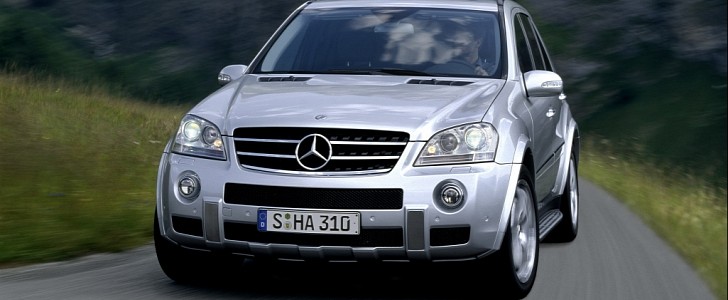Back in July 2021, Mercedes-Benz AG initiated an investigation after a customer’s report of reduced brake force support. In the analyzed case, the automaker’s engineers observed corrosion on the brake booster’s housing.
Further analyses were initiated the following month. Come September 2021, Mercedes launched a field study to analyze the level of corrosion on the suspect brake booster housings in different countries and regions. From December 2021 onwards, additional corrosion tests were conducted together with Continental Tire the Americas, the brake booster’s supplier.
In March 2022, one case was identified in the U.S. where poor braking performance was caused by a corroded brake booster. A whopping two months later, Mercedes-Benz AG couldn’t weasel its way out of a recall.
The National Highway Traffic Safety Administration was informed of the campaign, which involves nearly 300,000 vehicles produced between the 2006 and 2012 model years. More specifically, we’re dealing with 292,287 examples of the mid-size, the full-size GL, and R-Class large MPV.
Merc isn’t aware of crashes, property damage, injuries, or death related to this defect. No fewer than three brake booster part numbers are listed in the attached report, as in A1644310427, A1644310527, and A1644310627.
The corrosion is most noticeable in the joint area of the housing. After significant water exposure, the corroded brake booster may leak, thus reducing the brake force support. In rare cases of severe corrosion, it’s possible for the brake booster to suffer mechanical damage under hard braking. Merc notes that the function of the parking brake isn’t affected.
Moisture may wick under a rubber sleeve installed around the brake booster for aesthetic purposes. Before the brake booster gives up the ghost, the driver may notice a change in the brake pedal and hissing noises. As for the variants involved in this recall, Mercedes-Benz AG is calling back pretty much everything from the lowly 320 to the high-performance 63 series.
Authorized dealers will remove the rubber sleeve and inspect the brake booster. Vehicles with little corrosion may continue to be driven. Those with advanced corrosion will have an additional test performed. Vehicles that pass the test may be driven for up to two years, but must return for an additional repair, which is kind of stupid from the customer’s point of view. Those that don’t pass the test will require a replacement brake booster.
In March 2022, one case was identified in the U.S. where poor braking performance was caused by a corroded brake booster. A whopping two months later, Mercedes-Benz AG couldn’t weasel its way out of a recall.
The National Highway Traffic Safety Administration was informed of the campaign, which involves nearly 300,000 vehicles produced between the 2006 and 2012 model years. More specifically, we’re dealing with 292,287 examples of the mid-size, the full-size GL, and R-Class large MPV.
Merc isn’t aware of crashes, property damage, injuries, or death related to this defect. No fewer than three brake booster part numbers are listed in the attached report, as in A1644310427, A1644310527, and A1644310627.
The corrosion is most noticeable in the joint area of the housing. After significant water exposure, the corroded brake booster may leak, thus reducing the brake force support. In rare cases of severe corrosion, it’s possible for the brake booster to suffer mechanical damage under hard braking. Merc notes that the function of the parking brake isn’t affected.
Moisture may wick under a rubber sleeve installed around the brake booster for aesthetic purposes. Before the brake booster gives up the ghost, the driver may notice a change in the brake pedal and hissing noises. As for the variants involved in this recall, Mercedes-Benz AG is calling back pretty much everything from the lowly 320 to the high-performance 63 series.
Authorized dealers will remove the rubber sleeve and inspect the brake booster. Vehicles with little corrosion may continue to be driven. Those with advanced corrosion will have an additional test performed. Vehicles that pass the test may be driven for up to two years, but must return for an additional repair, which is kind of stupid from the customer’s point of view. Those that don’t pass the test will require a replacement brake booster.







